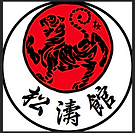We have classes in TWO locations now,
Arlington & Reston
Check our Schedules
Welcome to JKA Virginia
SHOTOKAN KARATE CLUB
“ The ultimate aim of the art of karate lies
Not in victory or defeat,
But in the perfection of the character of the participant ”
Gichin Funakoshi, founder of shotokan karateKARATE HISTORY
Though karate was first introduced to Japan during the 1920’s, its traditions in Okinawa are centuries old, and, like many Japanese and Okinawan arts, its roots can be traced to ancient China. Master Gichin Funakoshi, one of karate’s pioneers in its introduction to Japan, was born in Shuri, Okinawa in the Fall of 1868, and it is he who would have the greatest influence on the development of karate in the Twentieth Century.
Although a school teacher by profession, Master Funakoshi was considered to be one of the more proficient karate masters in Okinawa by the time he was in his early thirties. In 1902, Master Gichin Funakoshi and his students put on the first formal public demonstration of karate for Shintaro Ozawa, the commissioner of schools for Japan’s Kagoshima Prefecture. Ozawa was so impressed by this art and the young men demonstrating it that he made it possible for Funakoshi’s karate to be included in the schools on a formal basis. This action was against the wishes of many of the older karate teachers on Okinawa.
1906 marked the first public demonstration of karate, but it wasn’t until 1913 that Master Funakoshi was finally able to organize a demonstration team of approximately 25 men to travel around Okinawa and demonstrate this art to the public. Master Funakoshi was invited as the representative of the Okinawan Prefecture to demonstrate at the Butokuden (the official center of all martial arts in Japan) in 1916 and in Kyoto, Japan in 1917, but there was little more than passing interest at these displays. However, on March 6, 1921, the Crown Prince of Japan, Hirohito, visited Okinawa while en route to Europe and witnessed a karate demonstration in Shuri Castle’s great hall.
In the early Spring of 1922, Master Funakoshi returned to Japan at the request of the Ministry of Education to demonstrate at the first National Athletic Exhibition in Tokyo. The martial arts community, particularly Jigoro Kano (the founder of judo), and the educational community were so impressed and so eager to learn that Master Funakoshi was convinced to remain in Japan.
After that exhibition, Master Funakoshi was besieged by requests for him to stay on in Japan to teach karate. Two of the people requesting that he stay were Hoan Kusugi, the popular painter who later created the Shotokan Tiger, and Jigoro Kano. As a result, the 53 year old Master Funakoshi migrated from his home to teach and spread the art of karate to Japan.
In 1925, Master Funakoshi began gaining students and developing clubs at the various colleges and universities in the Tokyo area. In 1929, teachers and students in the Keio University’s Karate Research Group discussed the translation of the kanji for karate, and agreed to change the kanji of karate to mean “empty hand.” They contended that this new kanji was a better representation of what karate had developed into. This change was adopted over the protests of many Okinawans, but remains the accepted translation to this day.
Master Gichin Funakoshi was instrumental in this movement through his publication of a series of newspaper articles as well as his book, “Karate-do Kyohan”. Originally, the symbol kara had meant ‘Tang,’ referring to the Tang Dynasty of China. Another character for kara was chosen, which came from theZen concept meaning ‘empty’ or ‘rendering oneself empty.’ Te, of course, was both the Okinawan and Japanese word for “hand.” It was the consensus of the Keio research group that these kanji characters more accurately represented the true nature of karate as a method of character development through physical training. Eventually, this interpretation became the accepted definition.
By the late 1930’s, the karate movement was gaining strength, with Master Funakoshi having established and taught at more than 30 karate clubs on college campuses and at commercial businesses. Karate clubs were established, successively, at Keio University, Tokyo Imperial University, Shoka University, Takushoku University, Waseda University, Nihon College of Medicine, and other schools in the Tokyo area.
When World War II started, many karateka left to fight for their country, and further development of karate as art was stymied. In 1945, with the return of the country’s male population, karate and budo were developed and introduced into the public education system. Karate had thus become a way of life in Japan.
Almost immediately after the war, the karateka of Japan began reorganizing. Their goal was to build a large, strong organization. In May of 1948, the Nihon Karate Kyokai (the Japan Karate Association) was officially organized, with Master Funakoshi named chief instructor emeritus. Since Master Funakoshi was 81 years old, Masatoshi Nakayama was chosen to handle the actual teaching and Hidetaka Nishiyama was appointed chief of the instruction committee.
Master Gichin Funakoshi, the father of modern karate, died on April 26, 1957. On his black, cross-shaped gravestone are the words “Karate ni sente nashi” [“There is no first attack in karate”].

